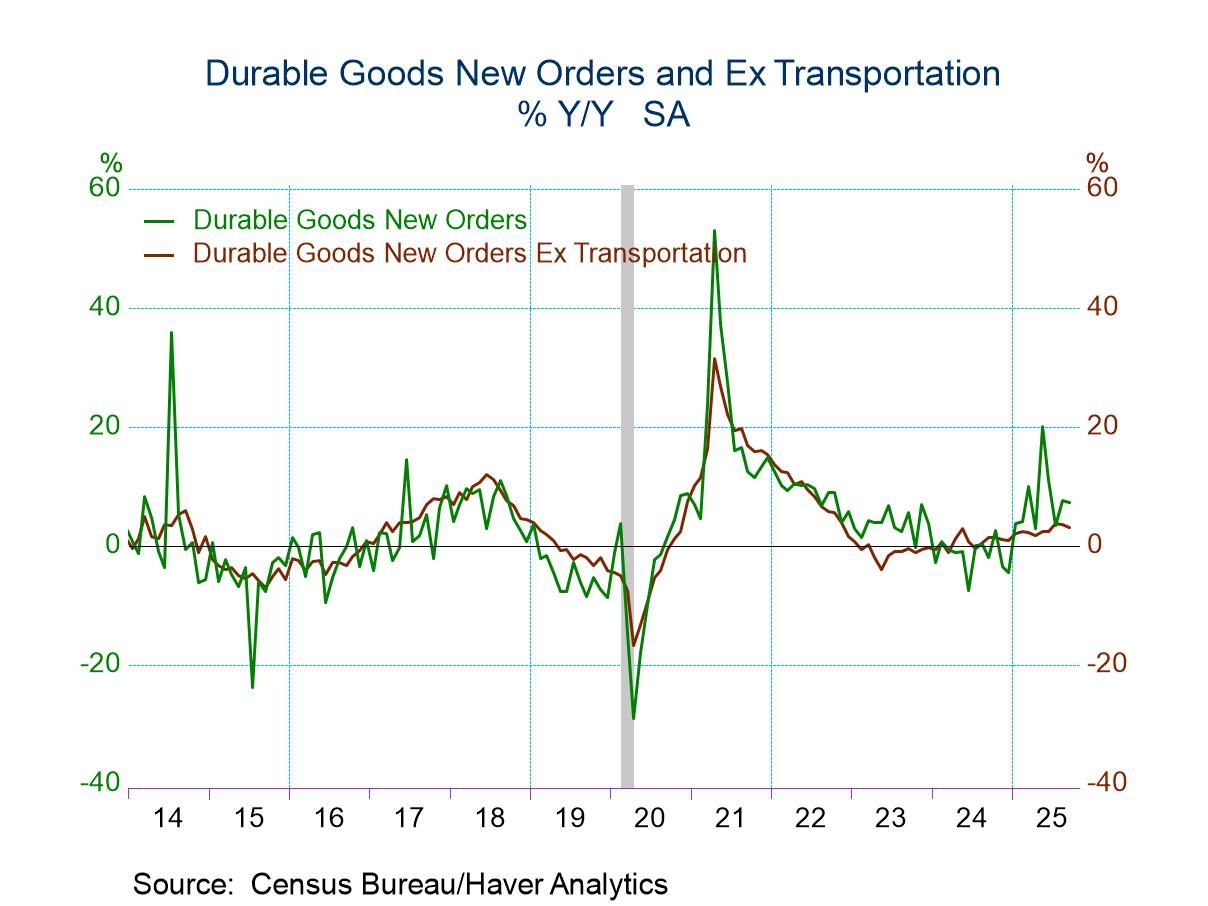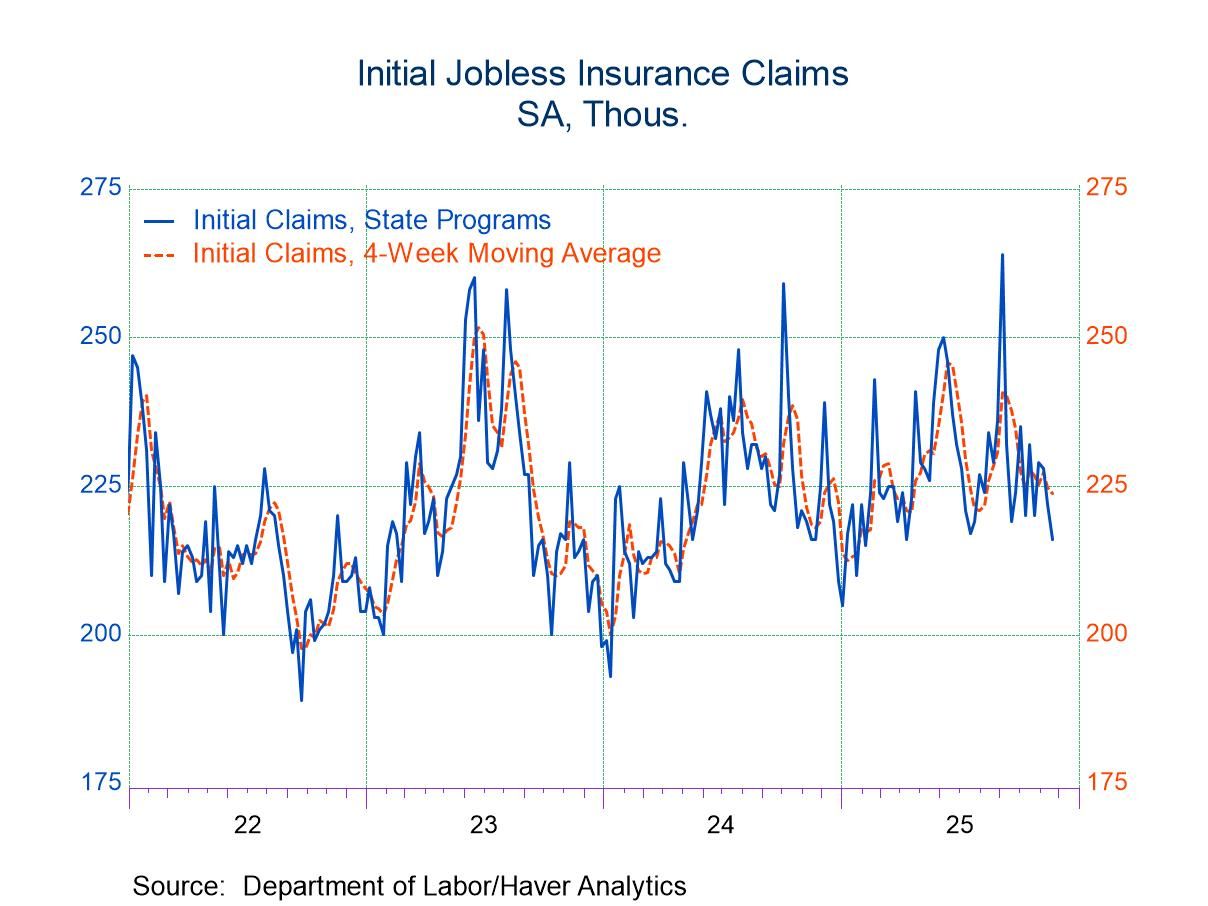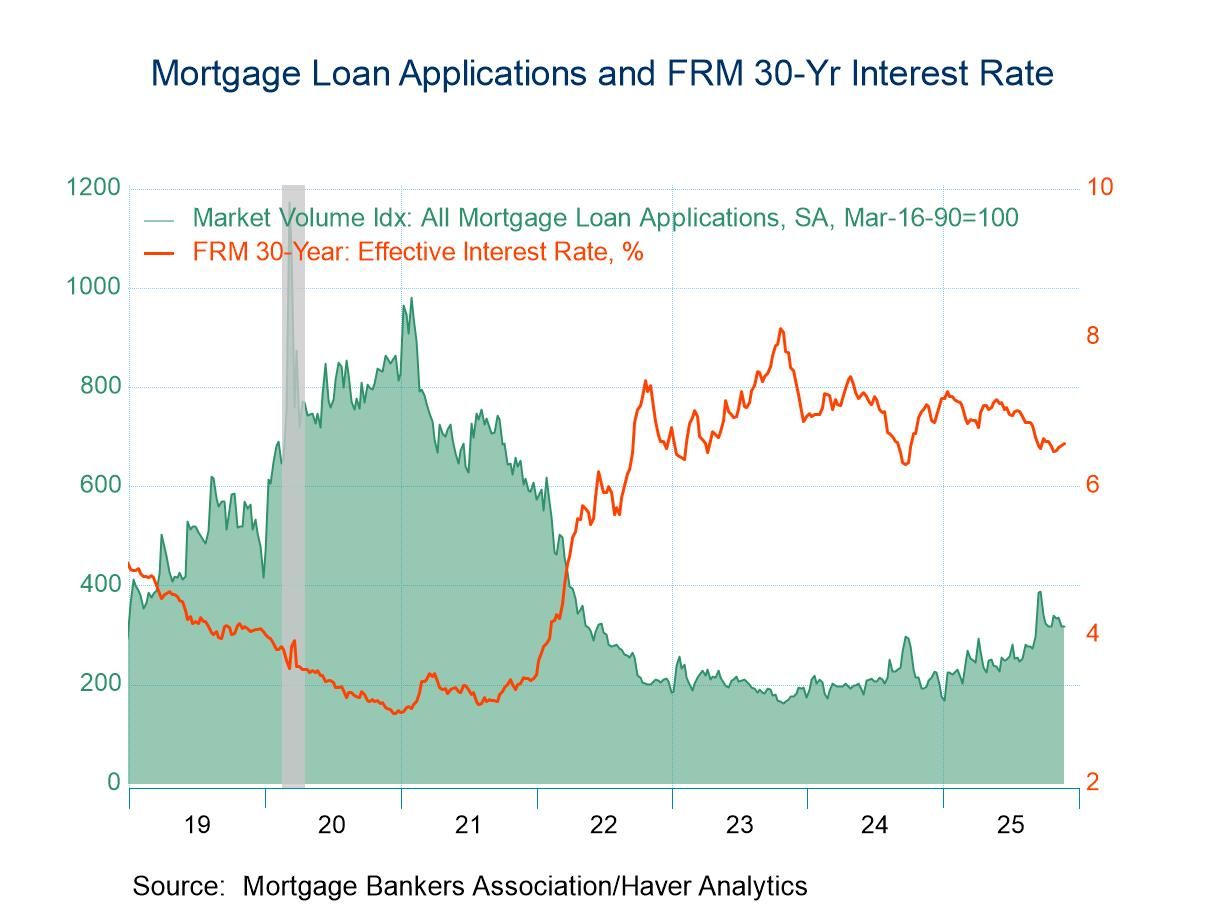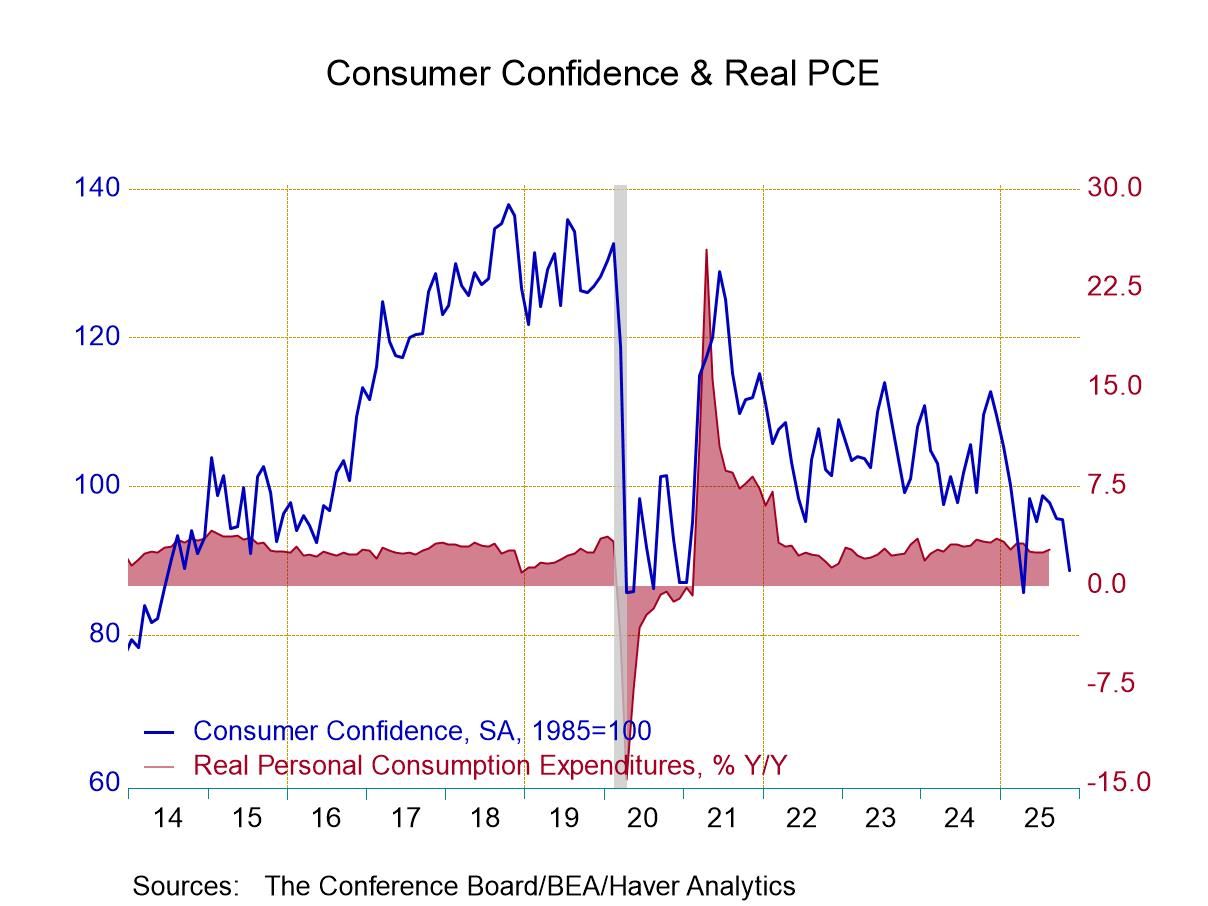 Global| Jun 24 2014
Global| Jun 24 2014U.S. FHFA Home Price Index Growth Eases Y/Y; Prices are Unchanged M/M
by:Tom Moeller
|in:Economy in Brief
Summary
The U.S. House Price Index from the Federal Housing and Finance Agency (FHFA) held steady during April, the weakest monthly reading since November. As a result, the year-to-year growth rate fell to 5.9% from an 8.5% peak in July of [...]
The U.S. House Price Index from the Federal Housing and Finance Agency (FHFA) held steady during April, the weakest monthly reading since November. As a result, the year-to-year growth rate fell to 5.9% from an 8.5% peak in July of last year. During the last twelve months, prices continued to rise by double-digits in the Pacific region, but here the 10.7% rate of increase was half that during last summer. Annual price growth in the Mountain region also tailed off to 7.5% during April, roughly half the y/y rate of gain twelve months ago. Prices fell during April for the second consecutive month.
Weaker annual growth rates in prices were evident throughout the U.S. One of the larger decelerations occurred in the Middle Atlantic region as growth fell to 1.7% y/y from the y/y peak of 5.2% six months ago. Amongst the East South Central states, the 3.1% y/y gain was down from 7.2% y/y last summer. Elsewhere, the rates of home-price increase eased to lesser degrees. Home price growth in the East North Central region was 5.5% y/y versus a high of 6.5% y/y nine months ago. In the South Atlantic region home price growth of 7.3% y/y compared to 9.0% y/y as of last July.
The FHFA house price index is a weighted repeat sales index. It measures average price changes in repeat sales or refinancings on the same properties. It is based on transactions involving conforming, conventional mortgages purchased or securitized by Fannie Mae or Freddie Mac. Only mortgage transactions on single family properties are included. The FHFA data is available in Haver's USECON database.
| FHFA U.S. House Price Index Purchase Only (SA %) | Apr | Mar | Feb | Y/Y | 2013 | 2012 | 2011 |
|---|---|---|---|---|---|---|---|
| Total | 0.0 | 0.7 | 0.5 | 5.9 | 7.7 | 3.4 | -4.0 |
| Pacific | -0.1 | 0.6 | 1.3 | 10.7 | 16.6 | 4.9 | -6.8 |
| Mountain | -0.4 | -0.1 | 1.1 | 7.5 | 12.8 | 8.1 | -6.6 |
| South Atlantic | 0.3 | 0.3 | 1.0 | 7.3 | 8.2 | 4.0 | -5.1 |
| East North Central | 0.5 | 1.2 | 0.4 | 5.5 | 5.5 | 2.2 | -3.6 |
| West North Central | 0.1 | 1.2 | 0.2 | 5.1 | 5.0 | 3.4 | -3.2 |
| West South Central | -0.8 | 0.5 | 1.0 | 4.8 | 6.2 | 4.3 | -1.1 |
| East South Central | 0.6 | -0.2 | 0.4 | 3.1 | 4.5 | 2.5 | -2.6 |
| New England | -1.3 | 4.1 | -2.0 | 3.0 | 3.9 | -0.1 | -2.2 |
| Middle Atlantic | 0.2 | 0.5 | -1.0 | 1.7 | 2.9 | 0.0 | -3.1 |
New England: Maine, New Hampshire, Vermont, Massachusetts, Rhode Island and Connecticut. Middle Atlantic: New York, New Jersey and Pennsylvania. East North Central: Michigan, Wisconsin, Illinois, Indiana and Ohio. West North Central: North Dakota, South Dakota, Minnesota, Nebraska, Iowa, Kansas and Missouri. South Atlantic: Delaware,Maryland,District of Columbia, Virginia,West Virginia,North Carolina,South Carolina,Georgia & FL. East South Central: Kentucky, Tennessee, Mississippi and Alabama. West South Central: Oklahoma, Arkansas, Texas and Louisiana. Mountain: Montana, Idaho, Wyoming, Nevada, Utah, Colorado, Arizona and New Mexico. Pacific: Hawaii, Alaska, Washington, Oregon and California. |
Tom Moeller
AuthorMore in Author Profile »Prior to joining Haver Analytics in 2000, Mr. Moeller worked as the Economist at Chancellor Capital Management from 1985 to 1999. There, he developed comprehensive economic forecasts and interpreted economic data for equity and fixed income portfolio managers. Also at Chancellor, Mr. Moeller worked as an equity analyst and was responsible for researching and rating companies in the economically sensitive automobile and housing industries for investment in Chancellor’s equity portfolio. Prior to joining Chancellor, Mr. Moeller was an Economist at Citibank from 1979 to 1984. He also analyzed pricing behavior in the metals industry for the Council on Wage and Price Stability in Washington, D.C. In 1999, Mr. Moeller received the award for most accurate forecast from the Forecasters' Club of New York. From 1990 to 1992 he was President of the New York Association for Business Economists. Mr. Moeller earned an M.B.A. in Finance from Fordham University, where he graduated in 1987. He holds a Bachelor of Arts in Economics from George Washington University.










